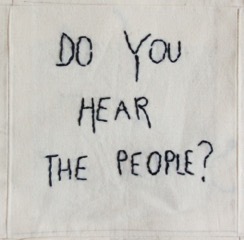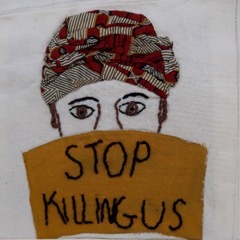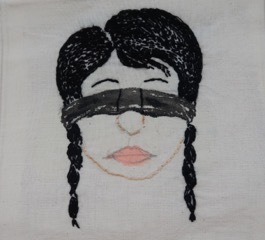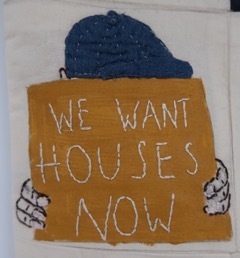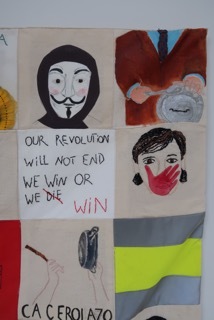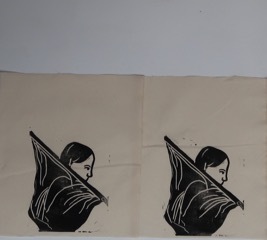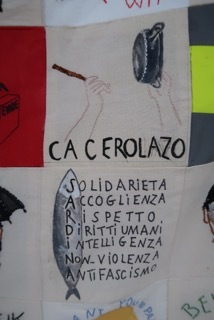About
May 2020. In the summer of 2019, when I was pondering and contemplating about this project, what struck and occupied me most, were the images of (mostly) young people protesting in Hong Kong. The enormous crowds, the umbrellas, mouth masks, helmets… Day after day I followed their persistent protest, and I was impressed by their courageous willpower.
When I spent a couple of days at the Belgian seaside, l could not help but notice the stark contrast between the brightly colored parasols and windscreens on the beach and the black umbrellas in Hong Kong on my screen. This is what I wanted to capture-illustrate: Protest.
2018-2019 were dominated by protest. Worldwide mass numbers of young people came out on the streets. Climate truants, Lebanon, Iran, Iraq, Algeria, Hong Kong and as an explosion, as it were, almost the entire continent of South America: from Chile to Colombia…
Following those protests in the press and on Instagram became an almost full-time occupation. In the end, it was necessary for me to map it out as well, on a world map. A common denominator from North to South—climate protests left aside (but not really)—is the protest against inequality. The people—and especially young people—are tired. By extension, it is also the (young) women who are tired: machismo, the impunity of sex offenders, economic inequality.
In the midst of my obsessive following of the protests, the Coronavirus broke out. While I am writing this, the entire world is, so to speak, at a standstill. Quarantine has been imposed worldwide… The protesters have to stay inside… a deafening silence instead of chanting, singing, “cacerolazos” (beating on pots and pans)…
And still I continue, the protests have also given me hope… The people will no longer remain silent… Not long before our lockdown, I sewed a whistling demonstrator on the occasion of the death of doctor Li Wenliang in Wuhan of the Coronavirus. He tried to wake up the world to the virus, but he was silenced.
Soon the idea dawned to visualize it all in stitching; I have always been fascinated by textile art all over the world and by the different ways of depicting scenes on/with textile. It is a full-fledged way of illustrating. If it revolves around activism, nowadays it is called craftivism. The Chilean arpilleras that were used during the Pinochet dictatorship to visualize the disappearances of the regime's opponents. They were not allowed to speak, so they came together to sew. These works were smuggled out of the country, with sewn-in hidden messages. Or the so-called foolish mothers in Argentina, who have been protesting for 43 years to demand justice and explanations about missing sons/family members, they wear a white foulard with the name of their missing loved one embroidered on it.
As title: Do you hear the people? A catchphrase that touched me during the Hong Kong protests. A call to be heard, like many other beautiful and striking slogans from the multiple protestors all over the world. I hope they will be heard!
Maud Aguirre y Otegui Antwerp, May 2020.
